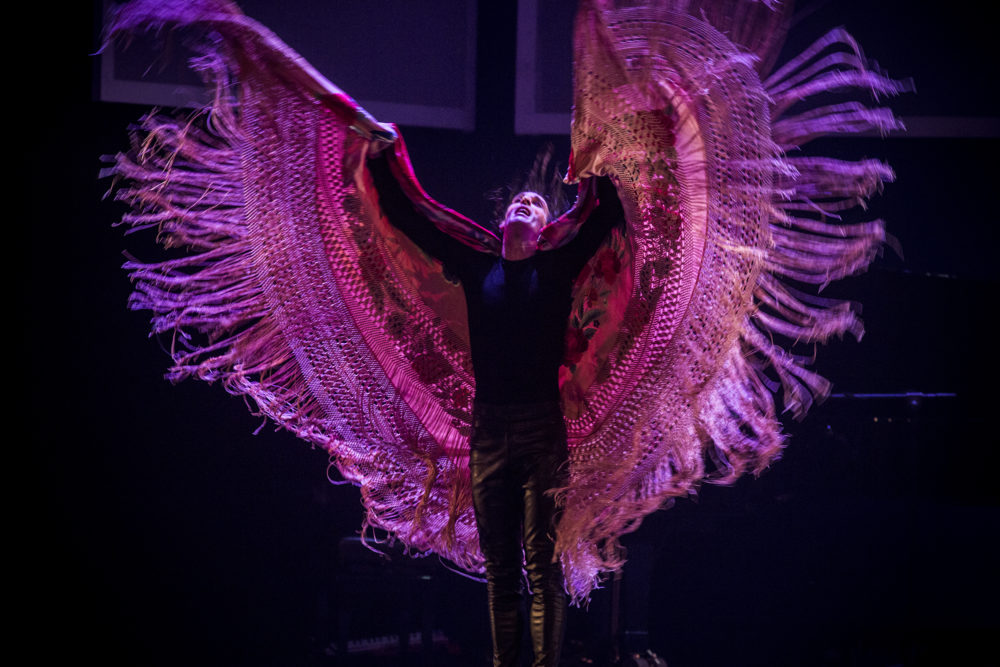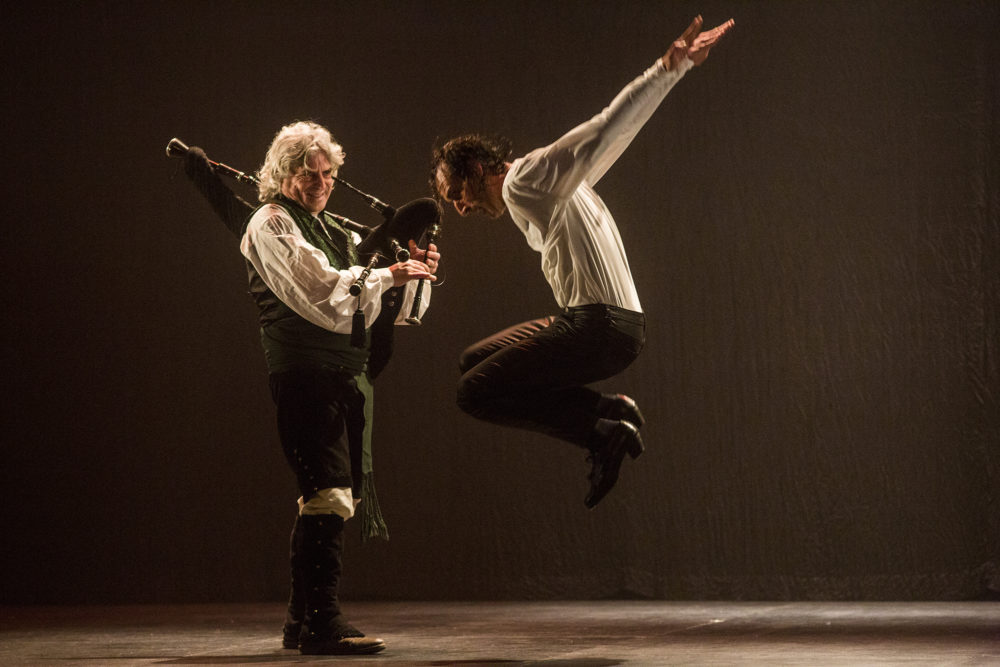Audiences attending the Jerez Festival on Monday, March 4, 2019 walked out of the Sala Compañía – a XVI Century church that has been converted into a theatrical space – marvelled by Adrian Santana’s stunning traditional flamenco ouvre SIMBIOSIS. About a half an hour later, many of these same audience members would be seated at the Villamarta Theatre – the festival’s largest venue – for the headlining show of the night, Rubén Olmo’s Horas Contigo (Hours with You).
Awarded Spain’s highest dance honour in 2015, the National Dance Prize, the Seville-born Olmo is as accomplished a dancer and choreographer as they come. He’s danced as a soloist with the National Ballet of Spain and later joined Eva la Yerbabuena’s company. He went on to create two works with his eponymously named company, before he was named the Artistic Director of the Flamenco Ballet of Andalusia in 2011 for a two-year tenure, and where he created two works for the ballet. More recently, Olmo has worked as a teacher at the Andalusian Dance Center, while collaborating on choreographies for other companies, including that of Victor Ullate.
With Horas Contigo, Olmo resuscitates his company after a nearly four-year hiatus, and the comeback couldn’t have been stronger. The company’s reintroduction is kept simple with a “best-of Rubén Olmo” approach that combines favorite works from previous shows, as well as a couple of new pieces created in collaboration with dancer/choreographer’s Patricia Guerrero and Eduardo Leal, both of whom have studied and worked under Olmo.

Olmo is thin and lithe, and his impressively precise sissonnes, leaps and cabrioles – for which he is well known – have always given him a more classical bent than most of his contemporaries in the world of Spanish dance. Horas Contigo starts in the vein to which audiences have grown accustomed with Olmo, that wonderful linear legwork, the graceful arms and turns, jumps that somehow defy gravity, but he quickly transitions into curved, heavy, percussive flamenco dancer.
Olmo’s classical technique and physique seem to have played a bigger role in defining his style and career, but if the first part of Horas Contigo does anything, it reminds us that Olmo’s flamenco choreography and execution are on point and will not be overshadowed. He starts with traditional flamenco – choreographies that are jovial yet intense and that showcase his tremendous footwork – but then moves into the contemporary with the now legendary piece Falsa Farruca, which was choreographed for Olmo by Israel Galván.
The Farruca is a somber, highly masculine flamenco style that is rumored to have begun in Galicia, Spain’s Northwestern-most autonomous community on the opposite end of the country from Andalusia, flamenco’s birthplace. In this “False Farruca,” Olmo walks out on stage with a bagpipe player (an instrument typical of traditional Galician music) and they discuss the possibility of performing a farruca as though it really was from Galicia. The result is a tongue-in-cheek work of genius that combines bagpipe music and flamenco dance with aspects of folkloric Galician dance and some of Israel Galvan’s signature whip-like, angular movements. It’s a hodgepodge that is meant to be both humorous, reflective and entirely unique.

Horas Contigo is a successful production because each piece is a completely different style and tone, and the audience is treated to Olmo’s wide-ranging dominion of Spanish dance, including escuela bolera (a classical style of dance from the XVIII century) and Classical Spanish. However, the production’s most laudable quality is that it radiates love.
Olmo dances each piece with a palpable affection, and his duets with Guerrero and Leal are evenhanded, with the master showing deference to his students. In turn, these acolytes have created works that use dance to extol mutual respect and admiration of Olmo. The audience feels privileged to witness these seemingly intensely personal interactions and to review a dance career that truly is worth a second look.
Reviewed on 4th of March at Jerez Festival


